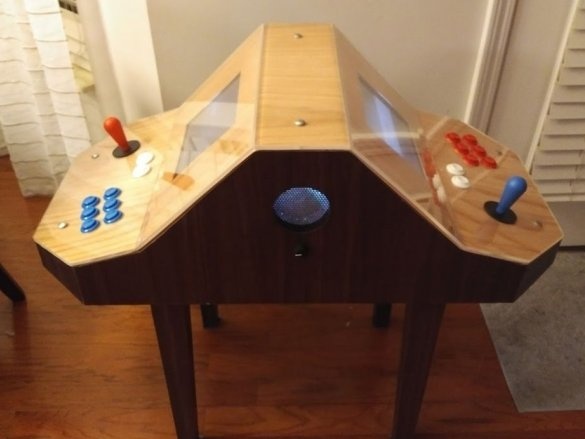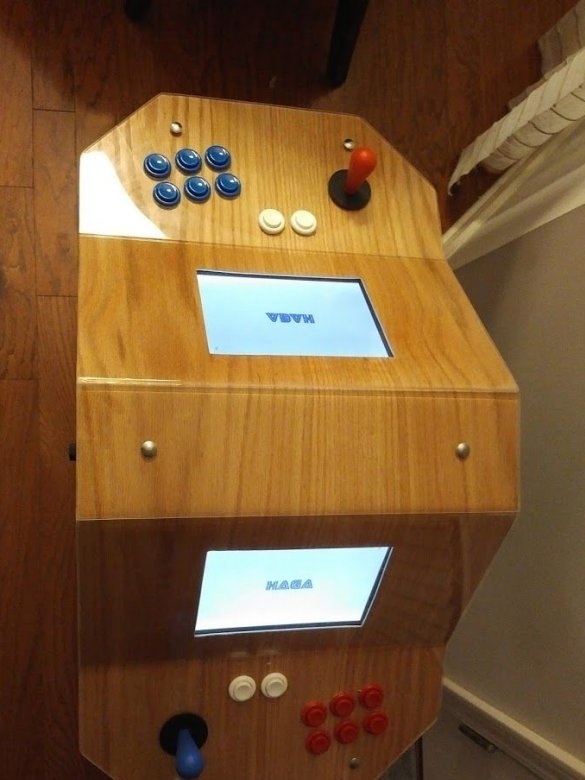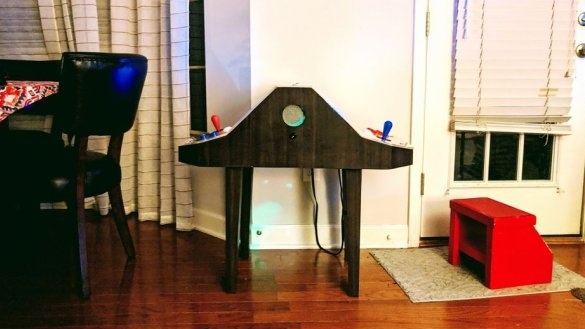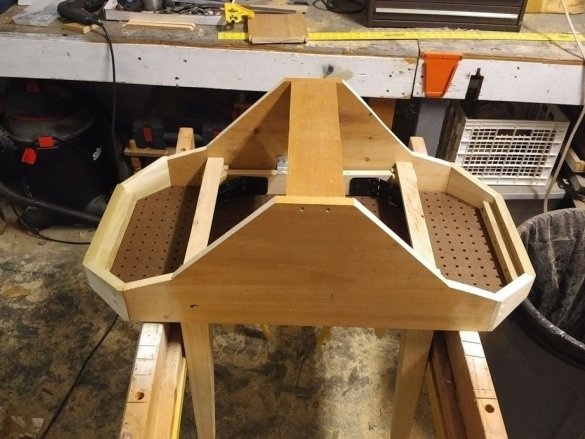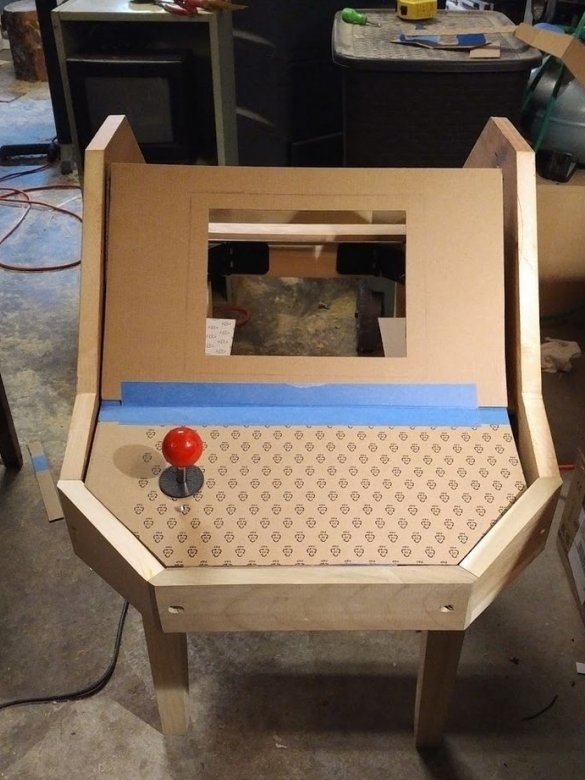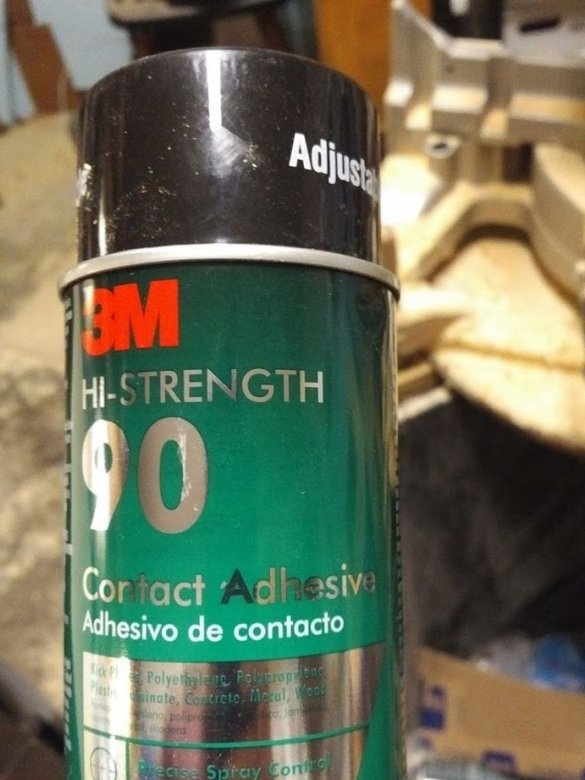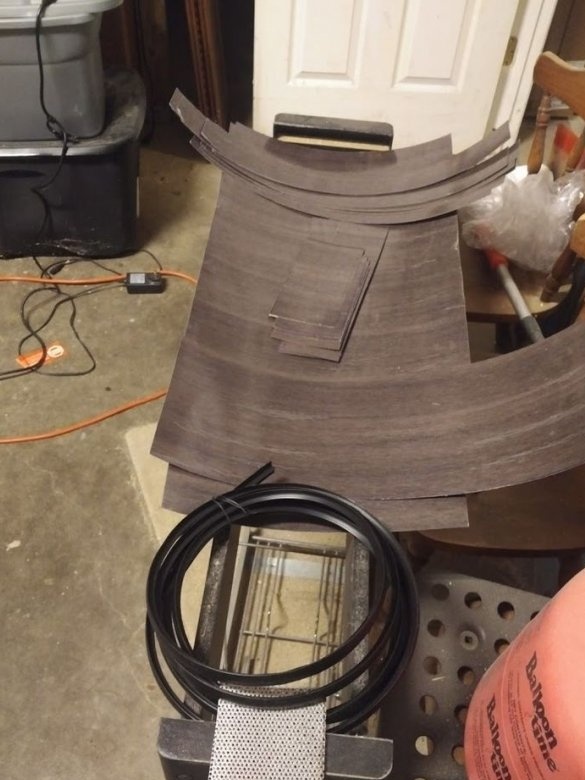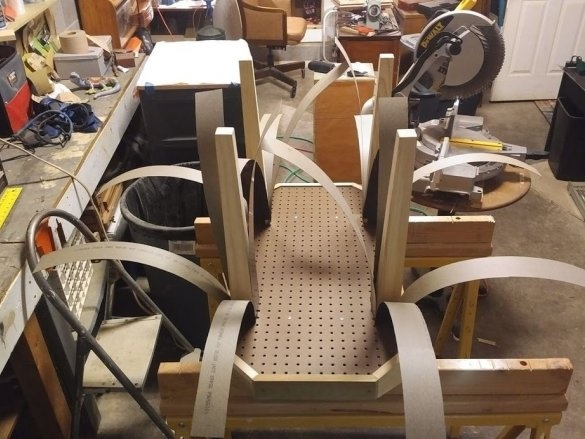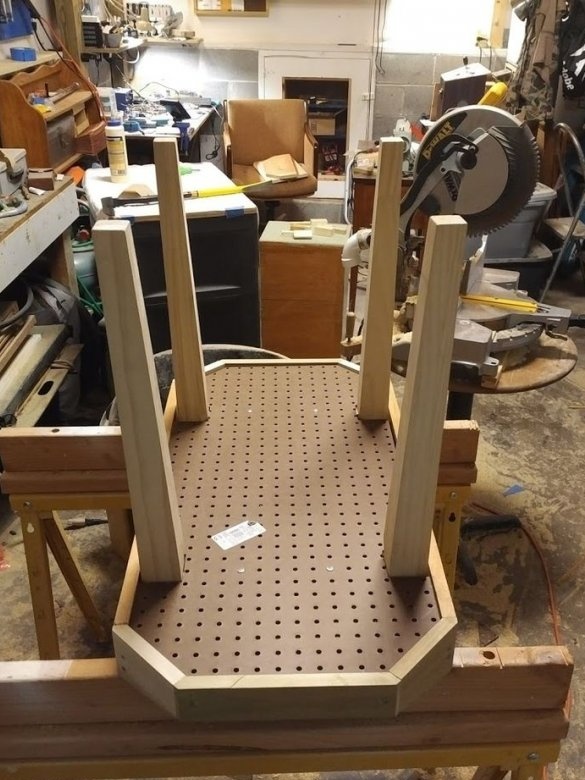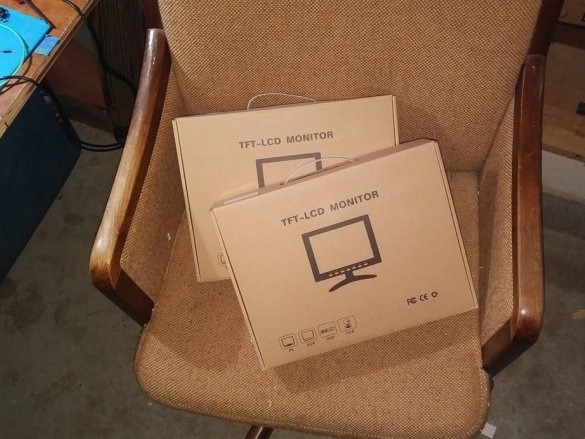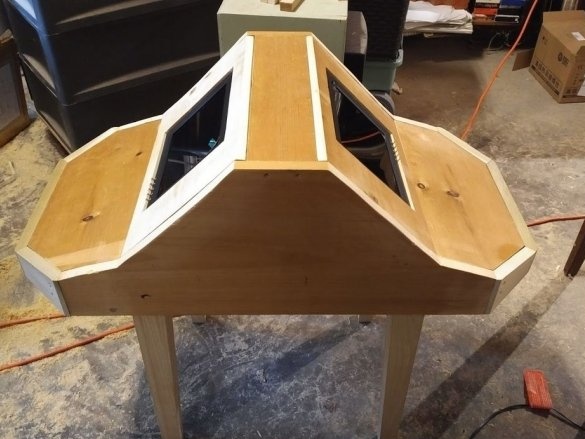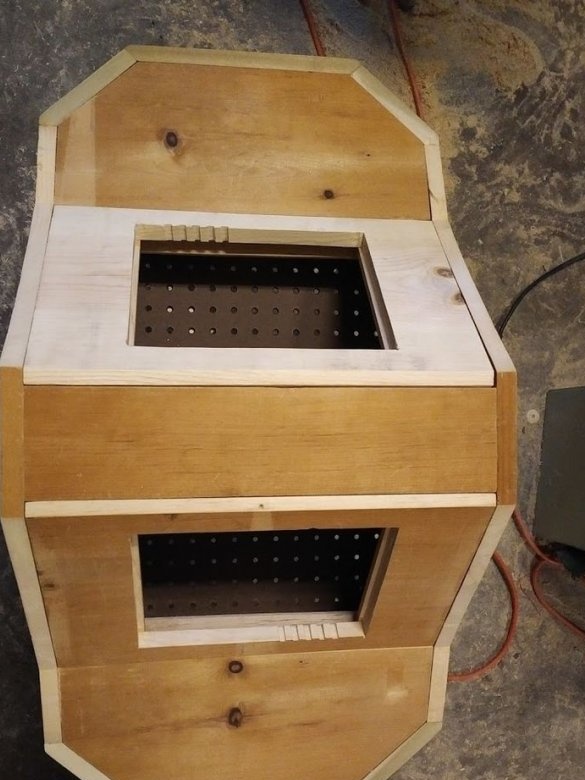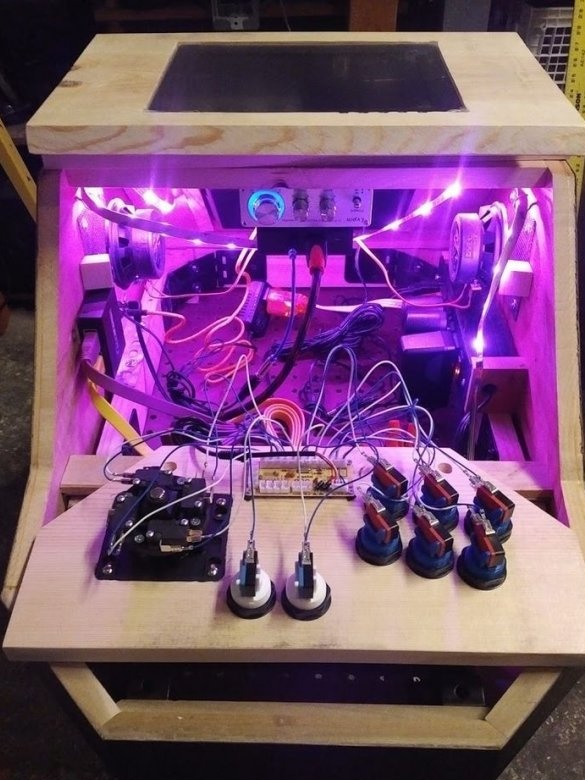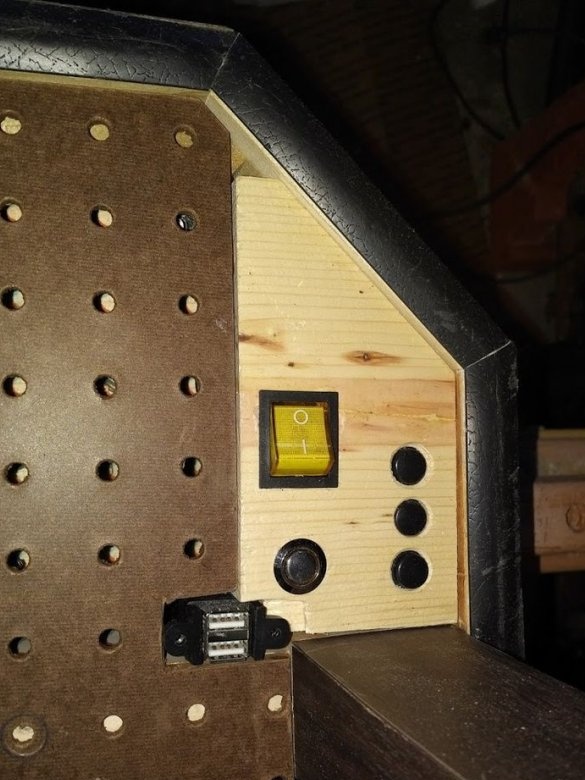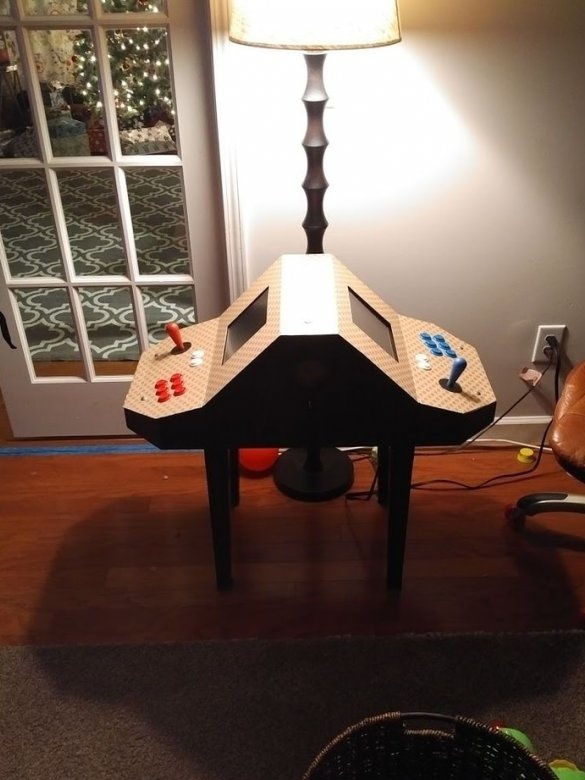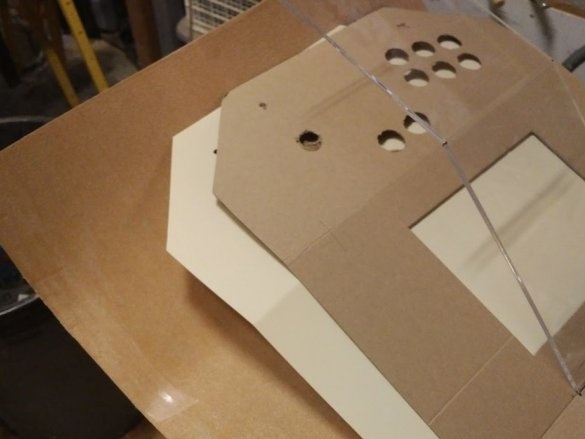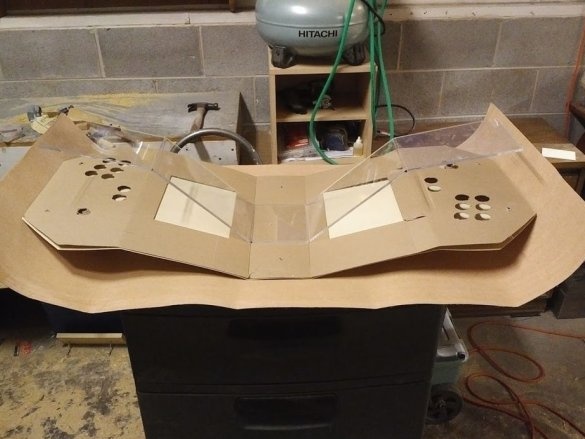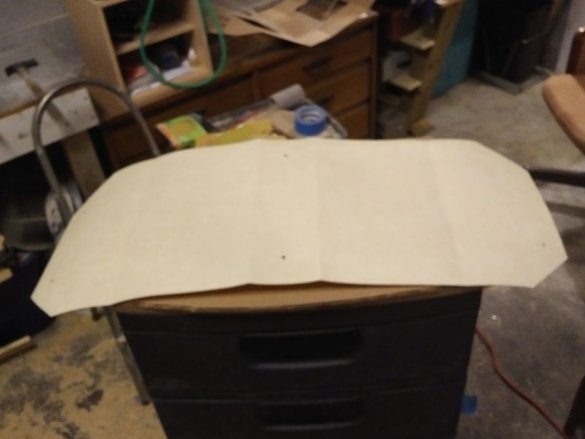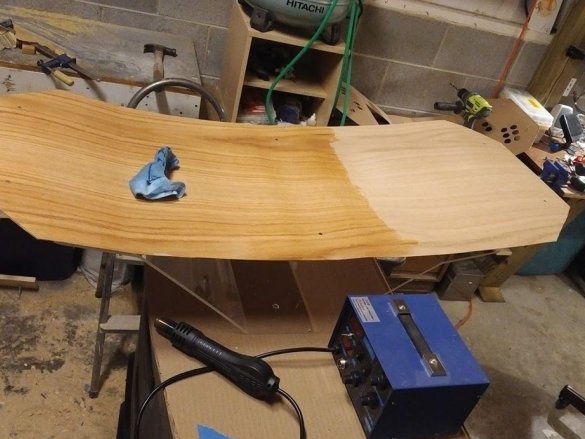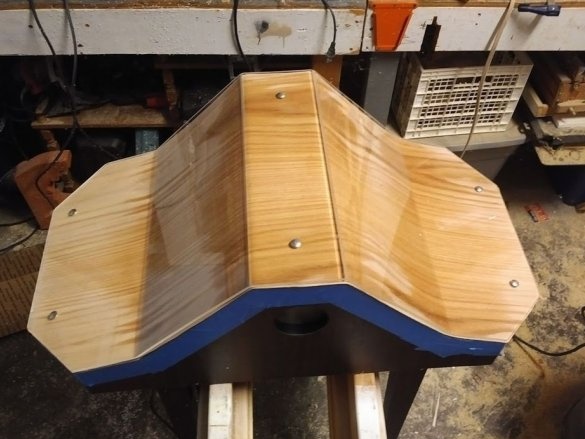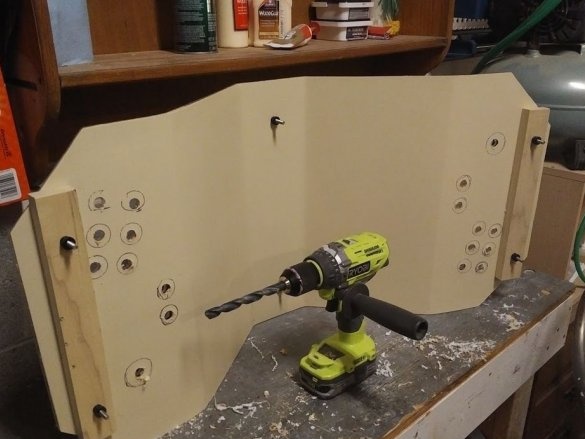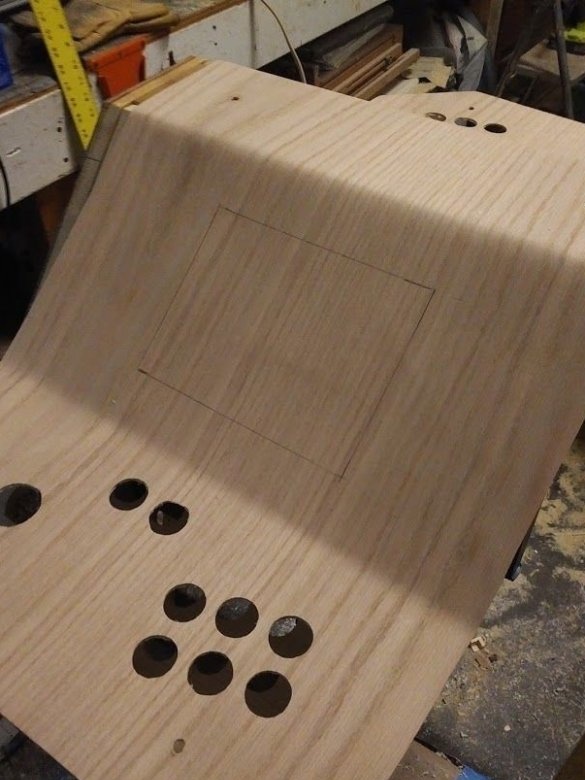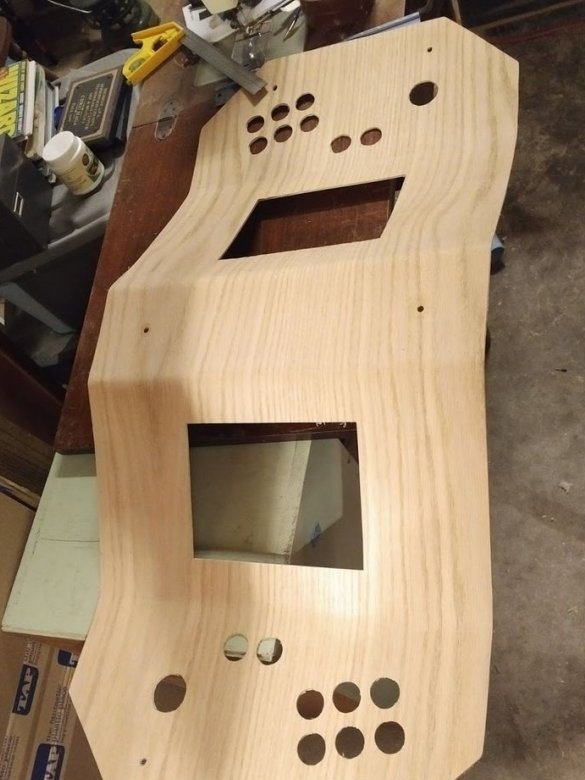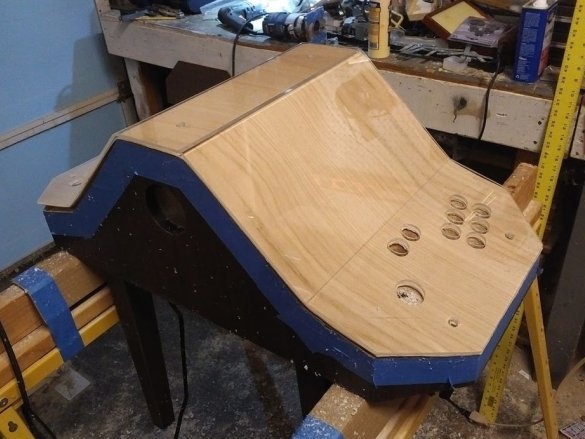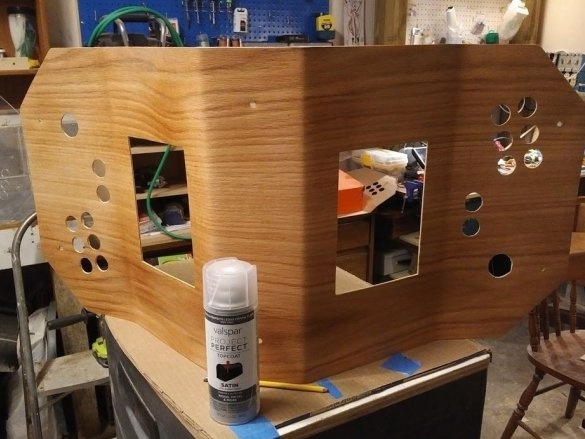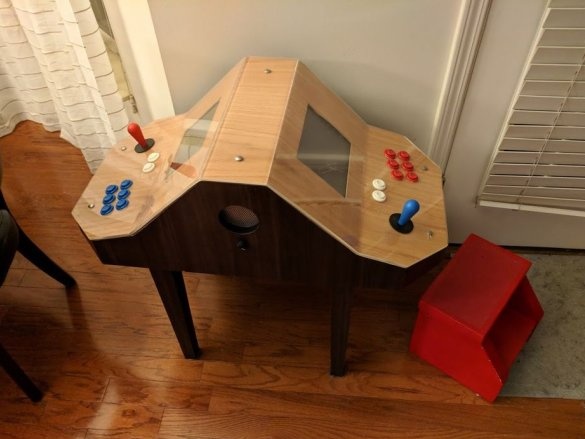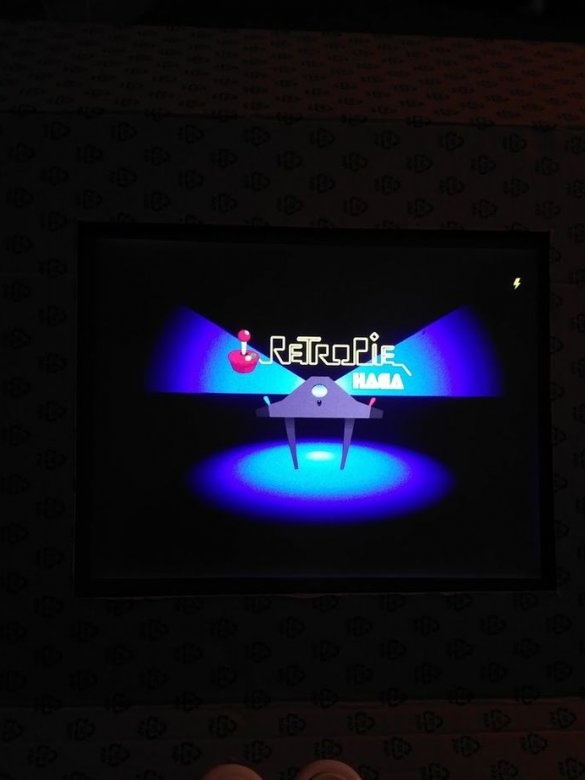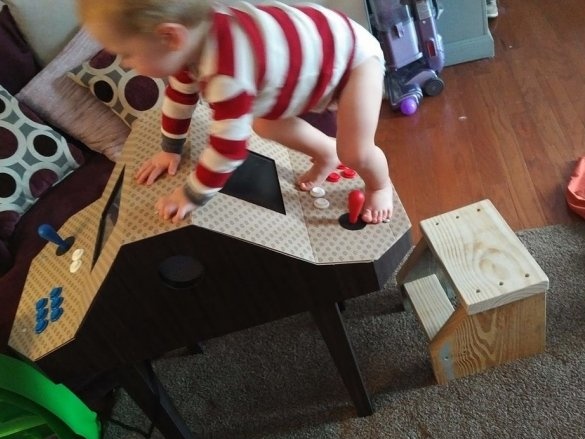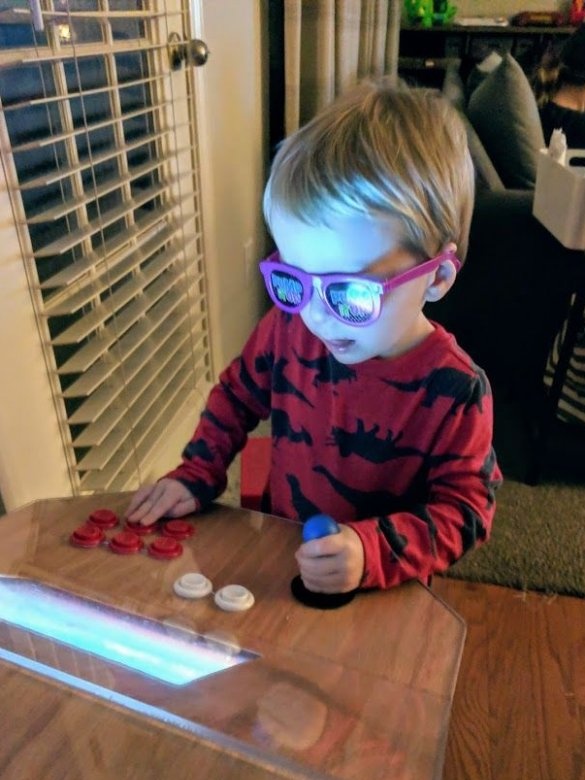The author of Instructables under the nickname lo fi designed a compact arcade machine on Retropie, allowing you to play together. Let's look at it from a couple of angles - it turned out a beautiful object of furniture and technology at the same time.
Basis homemade the master takes a ready-made kit for assembling a coffee table on legs. This kit includes only legs and a frame where you need to place the glass yourself. But the master does not install it, but instead slightly reduces the frame. Then cuts out the vertical curly walls and attaches them to the frame. As a removable bottom for the machine case, he uses a piece of sheet made of perforated fiberboard cut out in shape and size. Finally, he covers some of the surfaces of the body with Formica laminate, left over from previous projects. The glue selected by the wizard is shown in one of the following photographs. And another one shows an attempt to figure out how a joystick will look on an arcade machine.
The Raspberry Pi has one HDMI video output, and it took two monitors for the arcade machine. The master acquires them:
Makes front panels and cuts openings for monitors in them with a jigsaw:
So that they can work from one video output, the wizard used an HDMI splitter. Since this device displays the same picture on both monitors (and in dual-user games launched in Retropie, this is required), no additional software reconfiguration was needed. To access the settings buttons on the monitors, the master makes additional notches:
Having removed the bottom from the perforated fiberboard from the body, the master places inside the whole electronicsnamely, a sound amplifier, a Raspberry Pi in the case, two dynamic heads, an HDMI splitter mentioned above, a power strip with four sockets and a built-in five-volt power supply with two USB outputs, joysticks, buttons, a USB hub, a power supply for LED strip and the tape itself, monitors:
From the side of the first player, he installs a remote control with a power switch, LED strip controls, and USB ports from below:
A variable volume control resistor places near one of the dynamic heads (there is no such photo). The following is a view of an almost finished arcade machine:
To which the master divides the front panels with a “sandwich” of veneer and thin plastic, as well as plexiglass, which covers the monitor screens:
One small touch remains - draw a splash screen with a side view of the structure:
Now it’s definitely ready. You can use:
Plexiglass on top of the monitor screens allows the youngest son of the master to climb onto the arcade machine without any negative consequences for fragile LCD displays:
Well, the older one is more interested in using the device for its intended purpose - playing vintage video games:
But time will pass, and he will surely ask his father to show him how to use a jigsaw and other tools.

